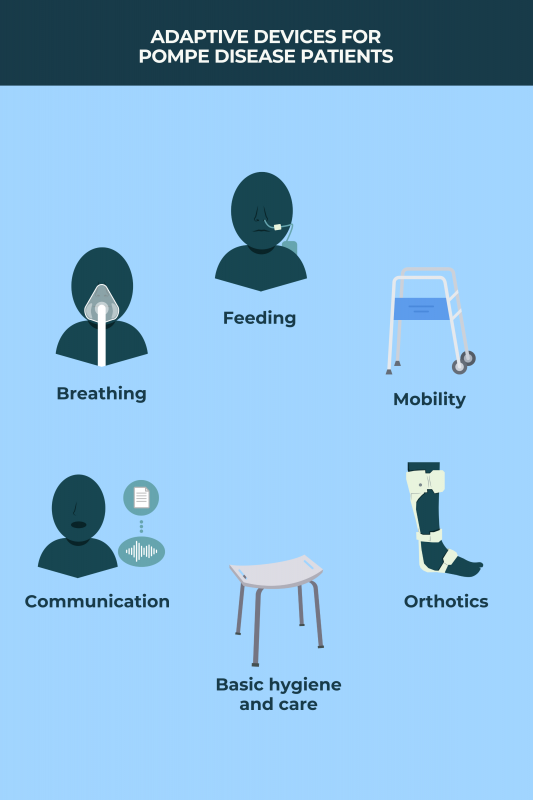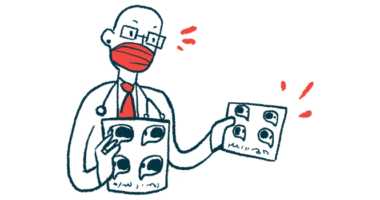FAQs about adaptive equipment for Pompe disease patients
The life expectancy of people with Pompe disease depends on several factors, including Pompe disease type, the severity of disease symptoms, and how well these symptoms are managed. The goal of using adaptive equipment is to increase a patient’s quality of life and functional status by helping ease some of the difficulties associated with the disease. In more severe cases, adaptive equipment such as respiratory support can be vital for extending the life expectancy of patients.
Pain can interfere with a person’s daily activities and quality of life, therefore pain management is an important element in Pompe disease treatment. Several adaptive devices can help patients to be more comfortable and avoid pain, including adapted seats and wheelchairs with adequate cushioning, and adjustable mattresses.
Children with infantile-onset Pompe disease usually show decreased muscle tone, delayed motor development, difficulty breathing, and feeding problems. Some aids and adaptive equipment are available to help ease some of these issues. These include feeding tubes to help children receive proper nutrition, orthopedic devices to help support their functional capacity, adapted wheelchairs and specific car seats, and equipment for respiratory support (invasive and non-invasive ventilation).
Pompe disease affects each person differently, therefore any treatment and care plan must be tailored to meet the individual patient’s needs. Different treatments exist based on the type of Pompe disease for infantile-onset or late-onset. Concerning adaptive equipment, it also differs based on patients’ needs, but options are available for both disease forms.
Not all Pompe patients require respiratory support, but when the disease affects the diaphragm and other muscles involved in breathing, such support likely will be required — be it invasive or non-invasive ventilation. In some cases, respiratory support is only required during sleep. It is estimated that about 75% of children and adolescents with late-onset Pompe disease eventually require mechanical ventilation.
Related Articles

 Fact-checked by
Fact-checked by 








